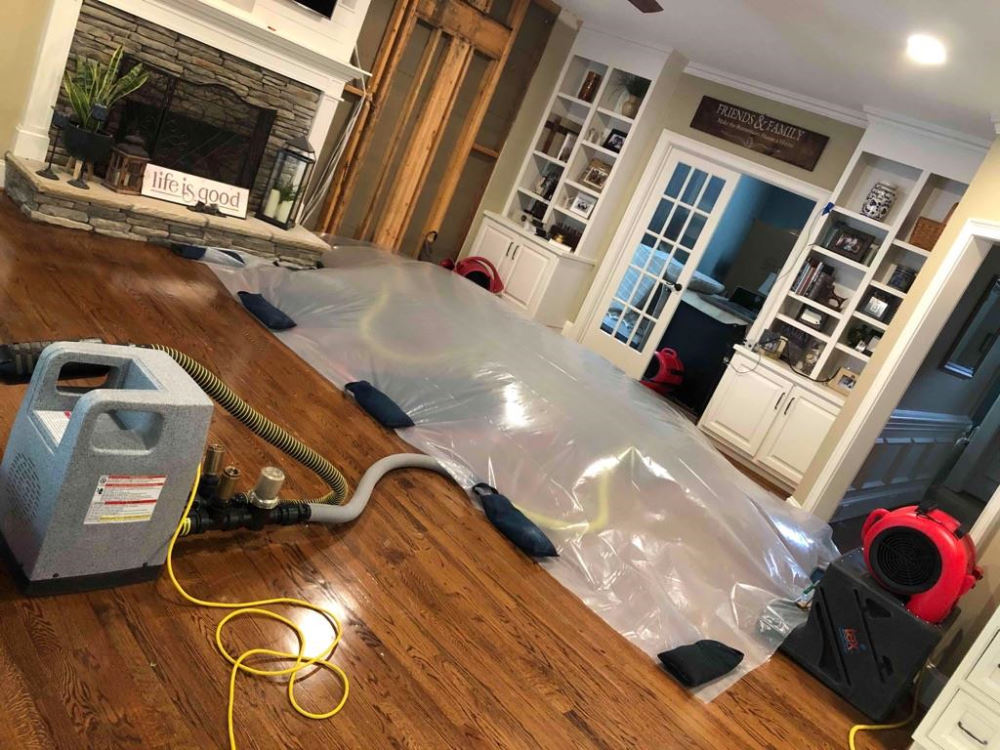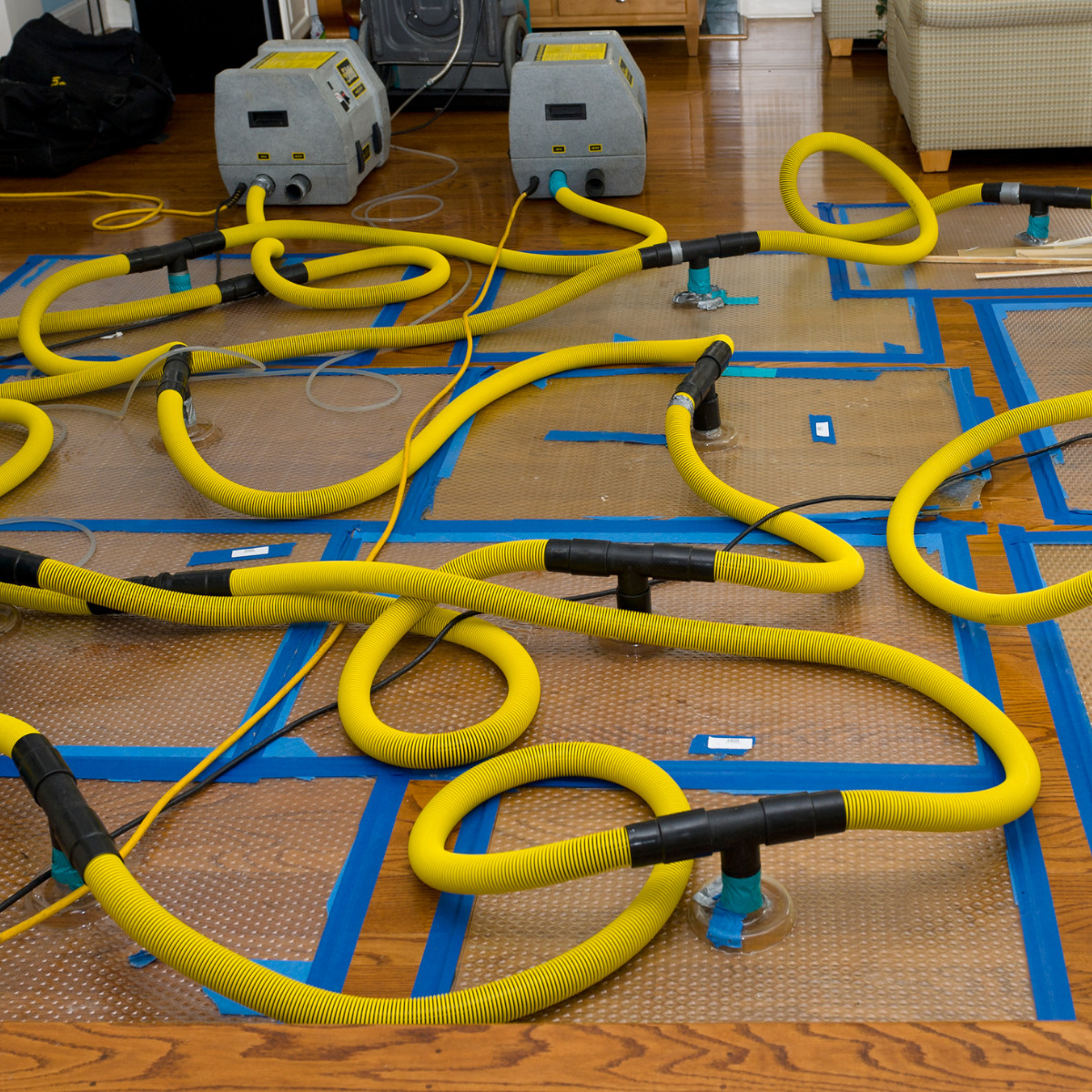Emergency Water Damage Repair Tips for Homeowners
Important Actions to Comply With for Effective Water Damages Repair in Your Home
When encountered with water damages in your home, understanding the essential actions for effective restoration can make all the distinction. You need to analyze the damage and guarantee safety and security prior to tackling the trouble. Stopping the resource of water is necessary, however it's simply the beginning. Once you have actually managed that, there's a collection of actions you have to take to shield your building from more concerns. Allow's explore what you must do following.
Examine the Damage
When you find water damages in your home, the primary step is to evaluate the damages extensively. Begin by recognizing the resource of the water intrusion. Look for leaks, burst pipes, or various other concerns causing the issue. Next, take a look at the influenced areas for visible indications of damages, consisting of mold, warping, or discoloration growth. Do not neglect to search in surprise spots like behind walls or under flooring, as water can leak right into these areas unnoticed.Document the damage by taking clear photos and notes. This will help you when going over the scenario with your insurance policy supplier or reconstruction specialists. Pay attention to the type of materials impacted, as various materials need various repair strategies. Ultimately, evaluate the extent of the damage. Is it small or comprehensive? Recognizing the range will guide you in determining whether to manage it on your own or employ the specialists for an extra substantial remediation process.

Guarantee Safety
Before you begin any remediation work, guaranteeing your safety and security is crucial. Examine the problem of your home. If the water's deep or if you see electrical hazards, don't enter the area. Turn off the electrical power and gas supply to stop mishaps. Put on safety equipment like masks, gloves, and boots to shield yourself from pollutants or mold.It's important to stay knowledgeable about your surroundings; watch for sharp items and slippery surfaces. If the water is from a sewage back-up, treat it as unsafe waste. Keep pet dogs and kids far from impacted areas to prevent exposure.Once you've taken these safety measures, you can wage the repair process. Remember, your safety comes initially, and if you're ever before uncertain, it's best to get in touch with a specialist. Taking these actions will assist guarantee you're ready to deal with the reconstruction securely and efficiently.
Quit the Resource of Water
After ensuring your safety and security, the next action is to stop the source of water. Recognize where the leak is coming from. It might be a burst pipeline, a malfunctioning device, or even hefty rain entering via a harmed roof. Turn off the primary water supply to your home to protect against additional flooding if it's a pipes issue. For devices, unplug them and shut down their supply of water valves.If the resource is outside, like rainwater, attempt to divert it away from your home utilizing sandbags or various other obstacles. For small leakages, you might be able to make use of tape or a sealer briefly till a professional can fix it. Bear in mind, resolving the resource swiftly is important to decreasing damage and stopping mold and mildew growth. As soon as you have actually stopped the water, you'll remain in a far better setting to carry on to the next action in the reconstruction procedure.

Eliminate Excess Water
Act rapidly to get rid of excess water, as standing water can bring about a lot more substantial damage and mold and mildew growth. Initially, gather your devices: a wet/dry vacuum, containers, and towels. If the water is shallow, you can make use of towels to absorb the dampness. For deeper water, a wet/dry vacuum cleaner is your best choice. Make certain to empty the vacuum cleaner often to stay clear of overflow.If the water is infected, like from a sewage back-up, put on protective equipment, including gloves and masks, to maintain on your own risk-free. As soon as you've eliminated as much water as feasible, look for concealed pockets of wetness in corners and under furnishings, as these can harbor mold.Don' t neglect to turn off electric devices and power outlets in damp locations to stop threats. This initial step is essential in lessening damages and establishing the phase for a successful remediation procedure.
Dry and Dehumidify the Location
It's important to completely dry and evaporate the location extensively as soon as you've removed the excess water. Begin by making use of dehumidifiers effectively to pull moisture out of the air and avoid mold growth. Maintain an eye on humidity levels to guarantee the area dries out totally.
Eliminate Standing Water
To properly take on water damages, you require to concentrate on getting rid of standing water as promptly as possible. Start by gathering necessary tools, like a wet/dry vacuum cleaner or a pump, depending on the quantity of water. A vacuum cleaner needs to do the method if the water is superficial. For bigger amounts, a pump is much more efficient. While functioning, make certain to put on safety gear to keep on your own secure from impurities. As you eliminate the water, take notice of hidden areas like under furniture or in edges where water could gather. Your area will start to dry out as soon as you've eliminated the bulk. This action is vital, as lingering water can lead to mold and mildew development and much more comprehensive damages.
Usage Dehumidifiers Efficiently
How can you effectively make use of dehumidifiers to completely dry and dehumidify your room? Start by positioning your dehumidifier in the most afflicted location, ideally where water damages is most serious. Make certain to shut all doors and windows to produce a sealed setting. Activate the dehumidifier and established it to the proper humidity degree, usually around 30-50%. Vacant the water collection tank regularly, or take into consideration making use of a model with a continual drain alternative for benefit. Preferably, utilize followers to improve airflow, helping the dehumidifier job much more successfully. Keep the dehumidifier running up until you're certain that the area is extensively dried out, preventing mold and mildew growth and added damage (Water Damage Repair). This action is vital for reliable water damage remediation
Display Moisture Levels
Tracking moisture degrees is important throughout the drying out process, as it aids guarantee your space stays without excess moisture. Buy a reliable hygrometer to track humidity properly. Ideally, you wish to preserve degrees in between 30% and 50%. If humidity readings rise above this variety, you might need to readjust your followers or dehumidifiers to enhance air flow. Check the readings on a regular basis, especially go now in areas prone to wetness, like restrooms or basements. If you notice relentless high moisture, consider increasing ventilation or making use of added dehumidifiers. Remaining on top of these levels not just speeds up the drying out process however also avoids mold growth, ensuring your home stays comfy and risk-free.
Clean and Disinfect Affected Surfaces

Restore and Fix Your Home
After cleaning and disinfecting the influenced areas, it's time to restore and fix your home. Begin by examining the damage. Look for architectural problems, like weakened wall surfaces or floors, and address any kind of needed repair work. Replacing harmed drywall or flooring is vital for both looks and safety.If your furniture or items were impacted, consider whether they can be restored or need substitute. Clean or expertly recover items where possible.Next, repaint walls and touch up any kind of locations that need focus. This not only boosts appearance however also secures surface areas from future water damage.Don' t fail to remember to inspect your pipes and home appliances for leakages, guaranteeing every little thing's functioning properly. Consider setting up a dehumidifier to avoid future wetness issues. By taking these steps, you'll recover your home to its former splendor and produce a more secure living environment.
Frequently Asked Questions
Exactly How Long Does Water Damage Repair Usually Take?
Water damages restoration commonly takes anywhere from a few days to several weeks, depending on the extent of the damages (Smoke Damage Restoration). You'll wish to analyze the situation swiftly to minimize additional problems and assure proper restoration
Will My Insurance Policy Cover Water Damages Reconstruction Prices?
Your insurance might cover water damages reconstruction costs, yet it relies on your plan. Examine your protection details and contact your insurance coverage agent to clarify what's consisted of and what you need to submit an insurance claim.
Can I Handle Water Damage Repair Myself?
You can handle water damage repair yourself, yet it's important to analyze the circumstance. If it's extensive, you may wish to call experts. Constantly prioritize safety and security and ensure you have actually got the right tools.
What Are the Indicators of Hidden Water Damages?
You could observe indicators of concealed water damage like deformed walls, stuffy odors, or staining. If your floorings really feel mushy or you area mold and mildew, it's time to examine further before the situation aggravates.
Exactly How Can I Avoid Future Water Damage in My Home?
To avoid future water damage in your house, you must frequently evaluate plumbing, seal fractures, preserve seamless gutters, and guarantee proper drain. Mounting a sump pump and moisture barriers can also assist maintain your room dry. When you find water damage in your home, the initial action is to examine the damages thoroughly. Act quickly to eliminate excess water, as standing water can lead to a lot more considerable damages and mold and mildew growth. To successfully tackle water damage, you need more helpful hints to focus on getting rid of standing water as quickly as feasible. As you remove the water, pay attention to hidden areas like under furnishings or in edges where water might collect. Water damage reconstruction typically takes anywhere from a few days to a number of weeks, depending on the level of the damage.